Where Modern Dragon Designs Came From
Once upon a time, there was a movie – I don’t see anyone talk about it, I’m not even sure how many people are familiar with it…
It’s called Reign of Fire.

This movie shaped the modern Hollywoodian concept of dragons. Seriously, it did. Hear me out.
Released in 2002, Reign of Fire was a movie about – essentially – dragons as that age-old trope of “let’s take one monster and turn them into an overpopulated zombie plague so we can use them to tell a story about humans and make the monster just this brainless evil locust swarm backdrop.” This has happened to a lot of monsters by now.
But wait, these dragons aren’t like the dragons you might be used to: these dragons were completely redesigned from the ground up by the filmmaker(s) in order to make a more “realistic” and “animalistic” dragon that was acceptable by Hollywood, who generally views “dragon movies” (like so many other fantasy things…) as cheesy and silly. Market your movie as a film about dragons and you probably won’t get a deal. Well, turns out, coming up with your own gritty dragon designs worked!
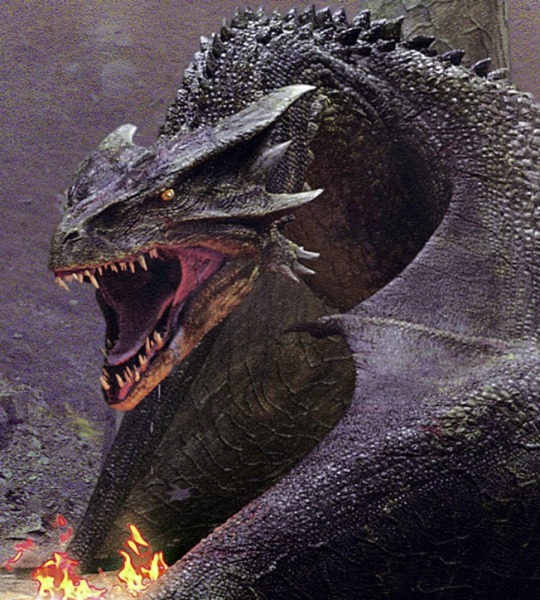
Please note that while I may sound sarcastic, jaded, and often maybe a bit scathing, I mean nothing against the creators of Reign of Fire or director Rob Bowman. I watched the movie in theaters when it released. I applaud Bowman for coming up with unique and interesting dragon designs, in order to have a different take on the creatures, so that they fit the story he wanted to tell, instead of doing what so many people do and completely co-opting concepts without trying to alter them to fit anything and… yeah… okay, I’m not going to talk about werewolf things in this post. Getting back on track:
What I don’t applaud is everyone ripping off Reign of Fire for their own dragons, doubly so because most of these people didn’t even take into account the reasons why it was designed that way. They should have left his dragons alone and come up with their own thing, but at least I guess Bowman can go down in history as the man who designed every Hollywood dragon for over a decade to come – with no signs of stopping – even down to the tail shape.
On Vice, you can find an article and interview with Rob Bowman, the director of Reign of Fire, discussing how he came up with this dragon design and how influential it has become. I highly recommend giving it a read.
Please note the Vice article is clearly written with the bias of someone who “can’t take dragons seriously,” so it’s also a good look at the Hollywood mindset about dragons and how much Hollywood treats fantasy in general like garbage (jerks).
It’s impossible to pretend this movie didn’t basically reshape modern dragons. Let’s get to the details…
Animalistic Design

Dragons in popular culture are generally – or at least they were generally – assumed to be powerful, intelligent creatures, often of a higher nature than humans and other mere mortals. They may be good or evil, but one can’t understate that traditional fantasy dragons are regal and majestic either way.
Reign of Fire wanted to usurp the majestic, intelligent dragon image, creating a smaller, hunched, knuckle-dragging sort of dragon that looks more like an animal – like a pteranodon. This is because the dragons in Reign of Fire are not exceptionally intelligent, noble beings that speak and hoard gold and have the wisdom of the ages. They are brutal hunters that set things on fire and eat everything smaller than them. So this design choice was a conscious one and a smart one.
The dragons in Reign of Fire are meant to be more scientific, more plausible, and also simpler, in a manner of speaking. They are not colorful, magical, ancient fantasy dragons…
Trouble is, everyone took cues from this design for their talking wise noble fantasy dragons, and it… doesn’t really work, at least if you ask me.
The dragon design in Reign of Fire looks like an ancestral throwback, an evolutionary ancestor to the intelligent, talking fantasy dragon, although they are smaller. They’re hunched, they haven’t evolved forelegs independent of their wings… you get the idea. Take a look at the “proto-drakes” in World of Warcraft versus the ordinary drakes, which have tiny dangly T-rex forelegs that haven’t fully developed yet, so they walk like the Reign of Fire dragons.
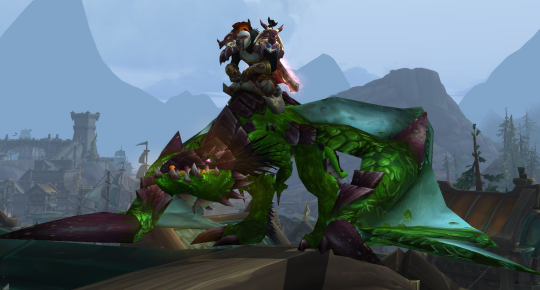
So many things taking this design for their intelligent, “higher being” dragons seems kind of… odd to me, to say the least. Unfortunately, Hollywood decided that’s the only way moviegoers can “take dragons seriously,” so here we are.
“Wyvern” – Two Legs vs Four
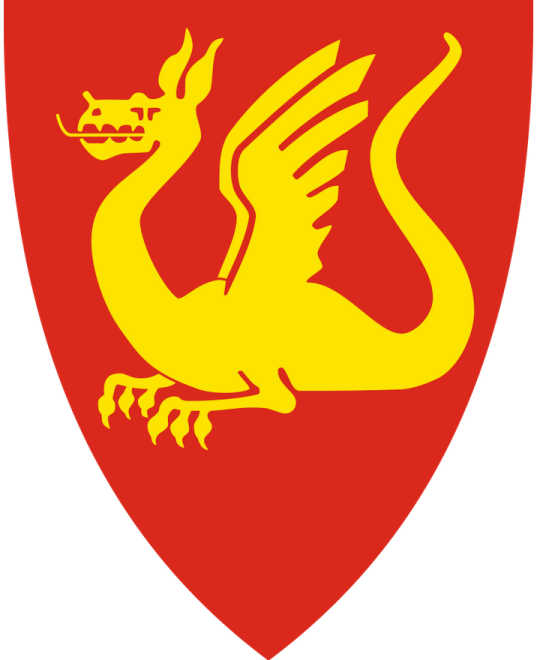
In medieval heraldry, there came to be a creature called a wyvern. Now, the etymology on the term “wyvern” is a little shaky. It originally didn’t specifically refer to a “two-legged dragon.” It is thought to mean/be derived from words meaning anything ranging from “asp” to “light javelin,” and essentially boils down to a flying serpent. It is noteworthy, of course, that the word “dragon” basically just means “serpent” too.
In heraldry, though, “wyvern” came to refer to a two-legged dragon – at least, if you ask the English, Scottish, and Irish; elsewhere in Europe, they may not be so picky. And now, in modern pop culture (such as Dungeons and Dragons), we often use it in the same sense.
Wyverns weren’t really a “thing” in folklore, just as dragons in folklore didn’t look like our modern idea of a dragon. It’s debatable whether the father of our modern concept of dragons, Fafnir (from whom Tolkien drew inspiration for Smaug), even had wings at all; he was essentially a serpent, perhaps with legs. Point is, wyverns come from heraldry, especially the specificity of two legs versus four.
So now you know why you might see a lot of people (myself included) referring to this design as a “wyvern design” for a dragon.
Dull Coloration – Grey and Brown over Red, Blue, Green…
There’s something else – something very important – that Hollywood took from Reign of Fire… the concept that dragons aren’t pretty colors and are, in fact, various hues of grey and brown, and any more contrasting colors are just vague indications instead of bright red scales.
Now, Reign of Fire obviously did this because – again – they were going for the more animalistic, natural look as opposed to the mysterious majestic magical being look. Okay, that’s fine. But then Hollywood decided that fantasy, too, has to be devoid of dragons with bright colors.

There are countless examples of this in modern media. Any dragon that was previously brightly colored has been dulled pretty much to an extreme. Sometimes you might catch a fleeting glimpse of them looking like a brighter shade, but it was probably just a trick of the light. Why? Because all dragons are desaturated to the point of being almost indistinguishable by color.
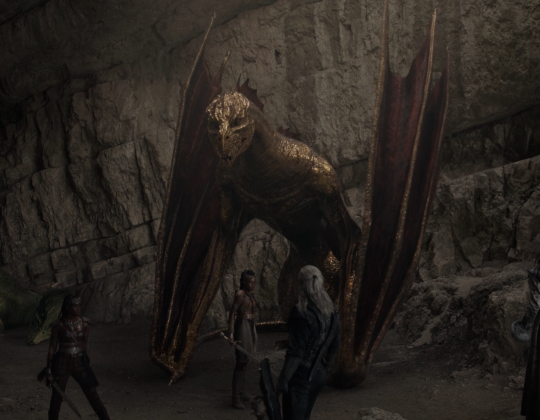
This is also why you see so many mods on the Skyrim Nexus called things like “true red dragon.”
There are plenty more examples of this – I’m sure you can see the difference when you look at those dragons and other modern film dragons over, say, something like this…
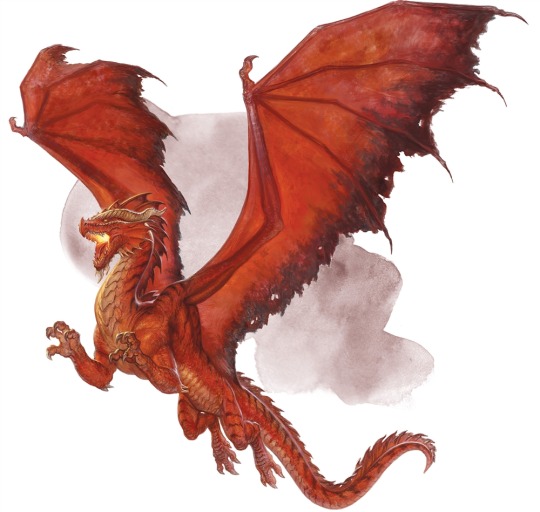
And now we move on to…
The Fire Breathing – Chemicals, not Magic
Bowman insisted on ditching traditional fire breathing (you don’t want the audience wondering whether the dragon’s mouth is being burnt up with every flame) and again looked to the animal kingdom for inspiration. The king cobra, once again, was a great starting point. It doesn’t spray fire, but it can spit its venom. Even more useful was the bombardier beetle, which shoots two chemicals from its abdomen that, once mixed, create a hot, burning spray. Bowman used these real-world examples to inspire his own dragons. They don’t breathe fire exactly, but rather spit chemicals from two different sacks in their mouths that, when combined, ignite. “That’s anatomy. That’s already been designed, so we’re going to draw from there,” he said.
(quoted from the Vice article linked to earlier in this post)
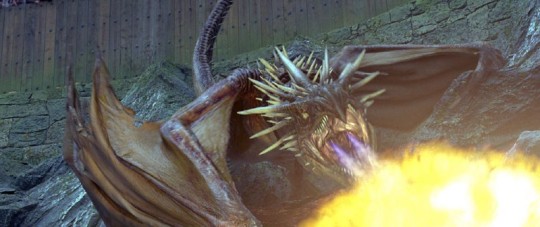
The director of Reign of Fire wanted his dragons to be more natural in that they breathe fire through organic means, based on chemical reactions, instead of the usual dragon magic. But lots of people loved this “mouth flap”/”mouth organ” design with “streams” of fire coming from the mouth instead of fire flowing directly from the dragon’s throat, so now you see it pretty dang often.
Horns? Brow Ridges!
Another thing that is basically out now in dragon designs is the real horns of many traditional dragons, like Spyro, and like the dragons in Dungeons & Dragons used to have.
These days, it’s all about brow ridges and big spiny scales that aren’t separate horns, they’re just big pointed scales or piles of scales or bone ridges – and they aren’t a different color than the dragon’s scales, either, pretty often. And, in general, dragon’s horns have become much smaller and far more numerous, and more like spines/ridges, as opposed to the great, sweeping horns of classical dragons.
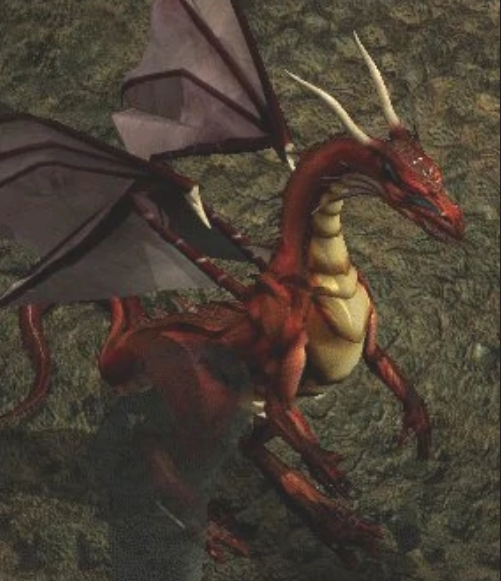
Firkraag is a very traditional dragon. Now, while Dungeons & Dragons has generally kept more traditional dragons (yay!), they did fall into the brow ridge horn thing – although they, thankfully, didn’t make the horns smaller and subtler and more numerous little spikes, like so many other modern dragon designs. They also went with the brow ridge horns for tieflings (once humans with demon blood, then some weird thing in 4E, and now I think they’re humans with demon blood again), as opposed to the ordinary horns of the tieflings in previous editions of D&D.

The Desolation of Smaug(’s design)
Here is… a big one. Here, we’ll talk some about the production of The Hobbit films over time, so we’re going behind the scenes.
Alright, so we all know Smaug, probably, by pop culture osmosis if nothing else. He is the quintessential dragon. He’s basically the founder of all Western dragon concepts: he’s big, he’s red, he hoards gold, he’s extremely intelligent and talks, etc. You get the picture. Every dragon that we have borrowed at least something from Smaug. And, in turn, he was inspired by Fafnir, the father of all our dragon concepts, from Norse mythology – but Tolkien took it all a step further and created the concept of dragons that we have today. Or, well, the not Reign of Fire ones. The fantasy ones.
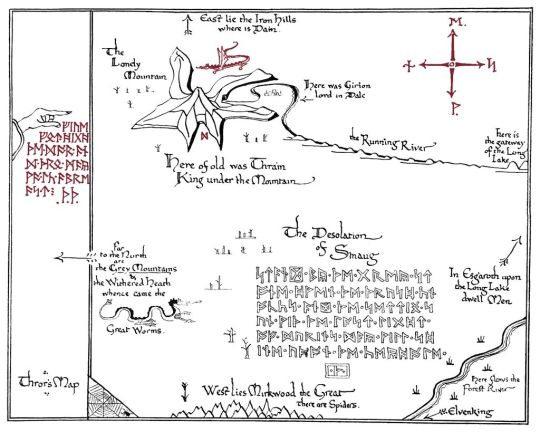
During the first Hobbit movie, An Unexpected Journey, we see Smaug attack the Lonely Mountain…
In this clip, you can plainly see that Smaug has four legs. This was actually edited slightly for later editions of the movie, or so I’ve heard (I haven’t watched any later editions).
I can tell you for certain that when I saw the theatrical release, it was like this, too. It is apparent throughout the scene that Smaug has four legs and wings, separately. I know because I was paying very, very close attention, because I was going to be very upset if Hollywood turned Smaug into a wyvern.
Well, they did – later.
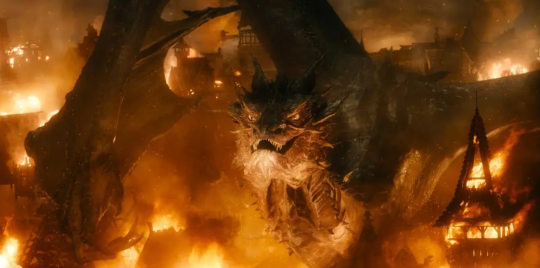
Apparently, some studio exec decided that having a traditional fantasy dragon, even if this dragon happens to be frelling Smaug himself, would not be okay in this modern Hollywood world. So we ended up with a dull reddish spiney hunching knuckle-dragging wyvern with an angler mouth (I’m sorry; I really am sorry if you like the design, that’s totally fine, it’s a fine design, I am glad you enjoyed it, but Smaug shouldn’t have looked that way IMO and forgive me but I am still in pain over it) in place of a more traditional dragon that held more to things like, I dunno, how Tolkien himself drew Smaug. Smaug’s movie design flies right in the face of that and destroyed our chance to finally see a proper traditional dragon done justice on the big screen.
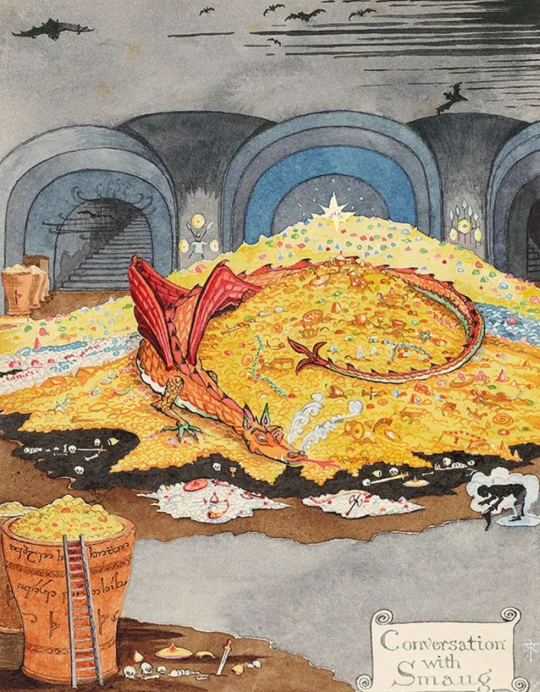
This is all just one big example why we should be thankful that The Lord of the Rings films were all shot in one go, so no one could alter important things like the design of the fantasy genre’s father of all dragons, in the middle of production. Of course, the production on The Hobbit movies was a nightmare at best, as you can read about in assorted other articles, and Peter Jackson was very unhappy with what the studio had him do to the series. All of that is just another story, I suppose.
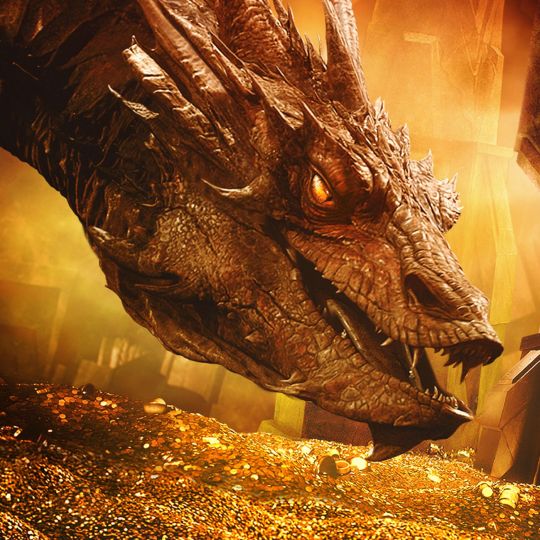
Dragons Redesigned by Reign of Fire: Example List
Now that we’ve gone over just a few of the talking points about Reign of Fire’s dragon designs (although I didn’t even get into the flat, spaded tail look in detail), here’s an undoubtedly incomplete list of several examples that have either entirely taken the design and/or were massively influenced by it…
(please note that not everything in this list held entirely to Reign of Fire’s design, obviously; some have the fire, some don’t; some have horns, some have head/brow ridges; but all of them are wyverns and most are darkly-colored)
- Skyrim – Obvious influence with the general design, skin/scales and ridges design, as well as coloration; however, it is noteworthy that the Elder Scrolls has had dragons with no forelegs since at least 1998, in the game Redguard – though that dragon was also very brightly-colored (also of note: Peryite, while technically a Daedric prince and not a dragon, had four legs at least as far back as Daggerfall in 1996)
- The Hobbit films, specifically The Desolation of Smaug onward – as mentioned before
- Harry Potter movies – Wholesale. Two streams of fire from mouth flaps in Goblet of Fire, generally dull greyish and/or brownish colorations, no forelegs, short/simple horns that are mostly ridges…
- Gods of Egypt – The giant fire-breathing cobras have the mouth flaps
- Game of Thrones – This one’s pretty obvious too.
- Disney’s Maleficent – In the new live action Disney movie(s), the dragon falls right into this design (though the fire doesn’t come from mouth flaps)
- Netflix Witcher series – Villentretenmerth is very much a wyvern design and a dull shade, and he in fact has no horns at all, even though dragons weren’t portrayed this way in any previous Witcher adaptations
- Stargate SG1 (season 10) – In the episode series “The Quest,” a dragon appears and… well, it looks just like all those other dragons, though the fire does come from its throat.
- Beowulf (2008) – I try not to ever talk about or think about this film, but I have to just throw out there that the dragon is very much Reign of Fire, especially with that wyvern design.
- Seventh Son – If you can call Malkin a dragon – she was called one, I think – she definitely also has the same kind of dull-colored wyvern design.
- Sucker Punch (movie)
- Lots and lots of B-movies and direct to DVD/streaming films – Dawn of the Dragonslayer, Dragon (2006), Dragon Crusaders…
Something to note, also, is that cartoons, anime, and other non-film media is mostly – but not entirely – free from this influence. Cartoons especially are free from it, partially because they aren’t influenced by Hollywood producers who want “serious” and “realistic” dragons. Cartoons are allowed to have magical, colorful, four-legged dragons. Unfortunately, we are deprived of those in live action film and television, by and large.
There are still other exceptions – most notably things that were created before this influence, like Dragonheart and its spinoffs and sequels, which have thankfully kept their dragon designs consistent instead of erasing their forelegs.
Of course, why dragons are depicted as four-legged and winged in the first place – and when this depiction arose – is another topic entirely. I’m not going into that right now, seeing as how this post is already preposterously long.
Long story short, I was rewatching the movie Gods of Egypt and, when I saw the giant cobra monsters breathe fire, I was possessed to write this article. Because Reign of Fire’s influence is something I have always noticed ever since its release, and something my brother and I talk about a lot (and everyone who knows me has surely heard me talk about it, too) – because, frankly, it’s always bothered me. My favorite dragons are traditional dragons: four legs, bright colors, wings, horns, breathing fire, the works.
So, although the original creator of these design ideas did something cool and different because he wanted to do his own take on dragons, Hollywood decided that these design cues should be taken to dumb down all dragons forever, the same way that Hollywood has dumbed down so many monster designs so that the only acceptable ones just a bunch of near-replicas of each other, including werewolves.
I think it’s very sad that film producers think you can’t take something like dragons or werewolves seriously unless they are dull, nontraditional, and ugly. And I say ugly in the sense of these are not pretty, majestic fantasy designs – they are, many of them, intended to be ugly. Though I personally also hold the opinion that most of them are ugly regardless of if they are intended to be ugly.
So – now you know! If you haven’t seen Reign of Fire, go check it out to meet the father of modern dragon designs, from the color of their hides to the shape of their bodies, the smaller horns, and – sometimes – even their tails.
(Special thanks to everyone on my discord who helped me compile this list, as well as of course my brother and all our ranting at/with each other on this topic over many years)